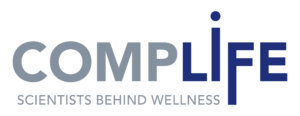Skin aging is a complex and multifactorial biological process. It is essentially the result of two processes: chronological ageing, known as intrinsic ageing, which affects the entire skin surface, and extrinsic ageing, linked to the harmful action of ultraviolet rays, pollution, tobacco, alcohol etc.
Overall, skin ageing can be seen as a loss of skin quality at all levels: wrinkles, skin texture, biomechanical properties, complexion, etc.
Quantifying skin aging changes and characterizing its 3D structure and function in a non-invasive way, is still a challenging area of research, constantly evolving with the development of imaging methods, image analysis software’s, new biometrological devices.
Therefore, it is essential to find new approaches to always innovate, to study the effectiveness of the tested cosmetic products.
To discover more about ageing mechanisms Complife Company supports its customers with different approaches: its organization is capable to implement knowledge/exploratory studies to discover more about skin aging signs. As an example, a multi-instrumental, multi centric study has be conducted, involving more than 300 volunteers of all phototypes and with different ethnicities in three different continents: Asia, Europe, and America.
In addition to classical methods to evaluate skin aging, Complife offers the possibility to evaluate skin aging sign with innovative devices like:
- The Line-field Confocal Optical Coherence Tomography (LC-OCT) by Damae Medical; a medical imaging technique that uses a light wave to capture three-dimensional images of biological tissues in real time, by combining the principles of confocal reflectance microscopy (RCM) and optical coherence tomography (OCT).This technology allows to explore and analyze the different layers of Skin (SC, epidermis, DEJ, upper dermis) in terms of thickness of the layers, composition (diversification of keratinocytes, undulation of junction, collagen network…), in the context of skin aging.
- New other prototypes as Underskin, developed by the team of Pr Hassan Zahouani in LTDS and Central School of Lyon or Easystiff developed by the French startup Biomeca for the measurement of the biomechanical properties of the skin.
To guarantee a cutting-edge service for its customers, Complife also proposes its technical laboratories and panelists to researchers. This gives them the opportunity to test their prototypes on volunteers, under controlled conditions, and possibly to compare/validate them with well-known devices, through Proof of Concept, or real validation studies. This is a great opportunity that can be offered to Complife customers who can benefit in advance, from these privileged partnerships.
Complife is also able to carry out clinical studies in the field of medical devices, such as but not limited to injectables, energy based devices, pre and post aesthetic acts, thanks to its network of aesthetic medicine doctors, dermatologists, plastic surgeons and KOL. Its close partnership with external medical centers gives the opportunities to have the access to a large pool of highly compliant volunteers of different age groups and skin phototypes. Because of strong knowledges of standards on medical devices, ISO:14155 and MDR 2017/745 Complife can assist medical devices companies in clinical studies.
For all these reasons Complife is the best partner to help customers to better understand ageing mechanisms and support them in their product’s development.
👉 To review this topics through the 50 articles published in the Skinobs News feed and Press review: click here
👉 To find out more about Complife expertise: click here
CONTACT






